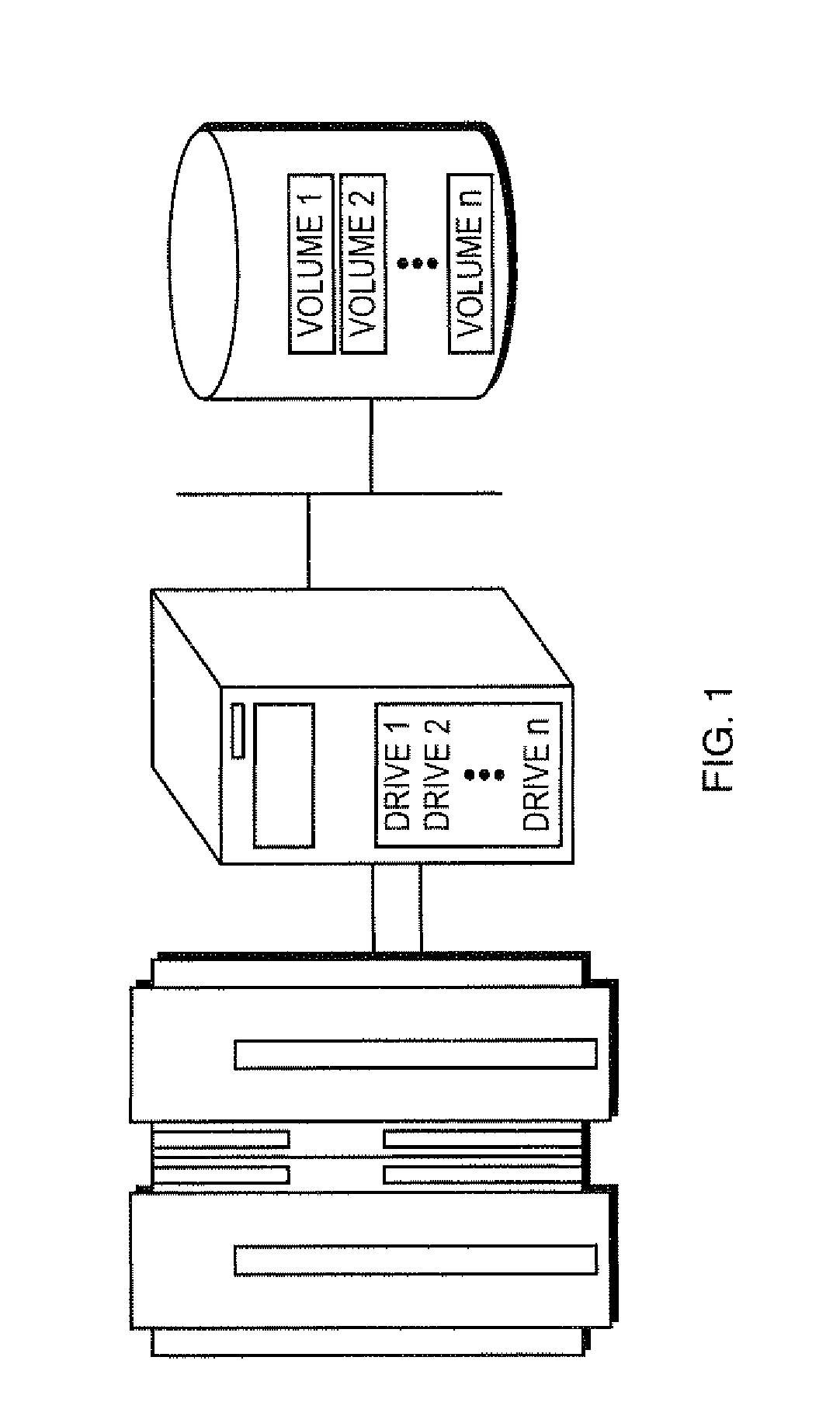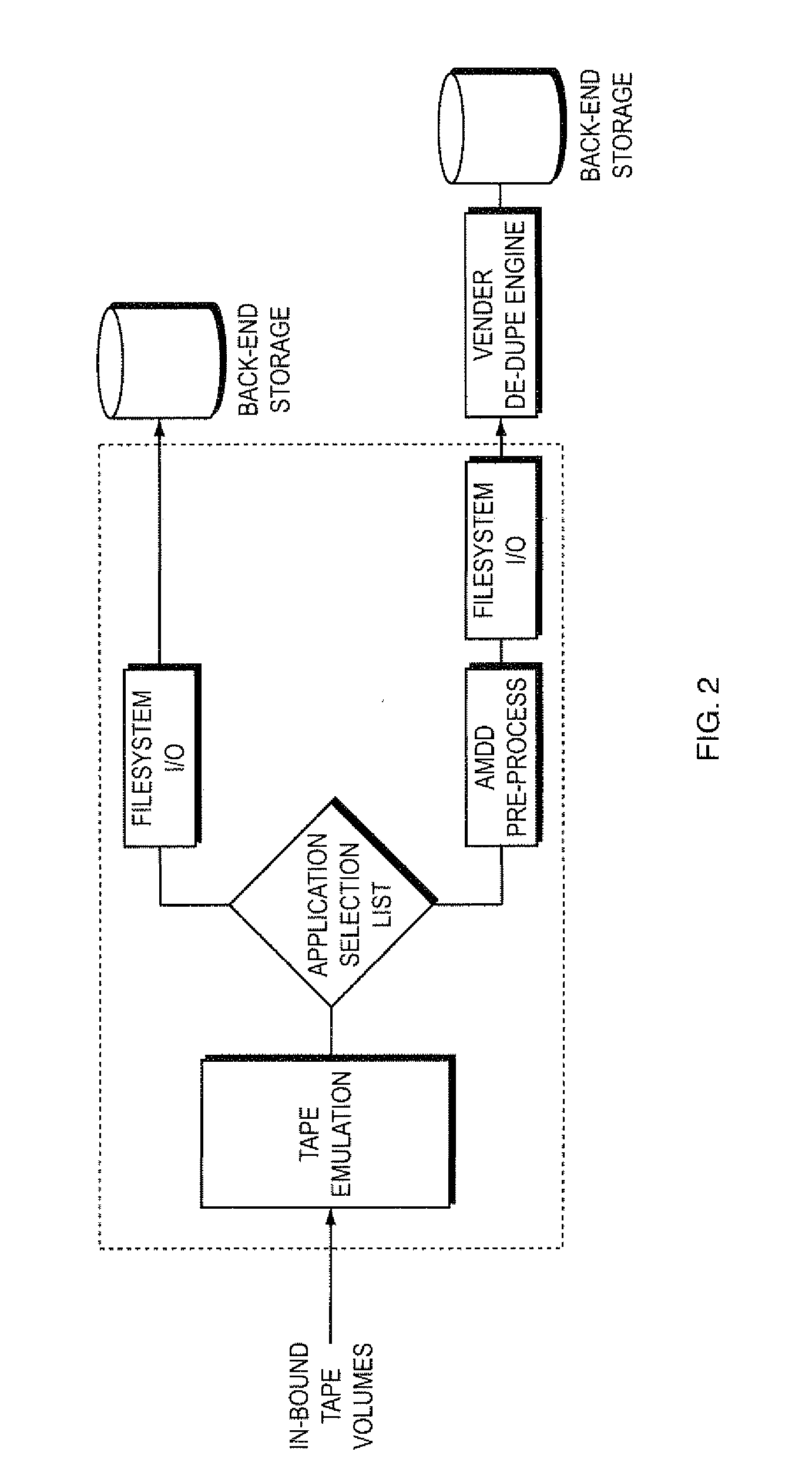Assisted mainframe data de-duplication
a mainframe and data deduplication technology, applied in error detection/correction, program control, instruments, etc., can solve the problems of reducing the effectiveness of deduplication, reducing the size of all copies, and affecting the performance of deduplication engines, so as to reduce the amount of storage
- Summary
- Abstract
- Description
- Claims
- Application Information
AI Technical Summary
Benefits of technology
Problems solved by technology
Method used
Image
Examples
Embodiment Construction
[0042]A description of example embodiments of the invention follows.
[0043]Introduction
[0044]In today's IBM mainframe data center there are a select set of mainframe-based applications used to provide the bulk of all data backup and protection services. In the z / OS environment, examples of these applications include IBM's DSS and HSM and Innovation Data's FDR. These identifiable applications are collectively responsible for an overwhelmingly high percentage of data written to mainframe tape devices.
[0045]Products such as Bus-Tech's MDL use software-based tape emulation to replace physical tapes and tape drives with low-cost open systems disk storage. Each time a mainframe program writes a new tape volume to MDL, software running within MDL writes that data as a file on a standard filesystem. And, because many of the open-systems data de-duplication engines are capable of presenting themselves as a Network File System (NFS) server, those de-dupe engines can automatically receive data ...
PUM
 Login to View More
Login to View More Abstract
Description
Claims
Application Information
 Login to View More
Login to View More - R&D
- Intellectual Property
- Life Sciences
- Materials
- Tech Scout
- Unparalleled Data Quality
- Higher Quality Content
- 60% Fewer Hallucinations
Browse by: Latest US Patents, China's latest patents, Technical Efficacy Thesaurus, Application Domain, Technology Topic, Popular Technical Reports.
© 2025 PatSnap. All rights reserved.Legal|Privacy policy|Modern Slavery Act Transparency Statement|Sitemap|About US| Contact US: help@patsnap.com



